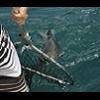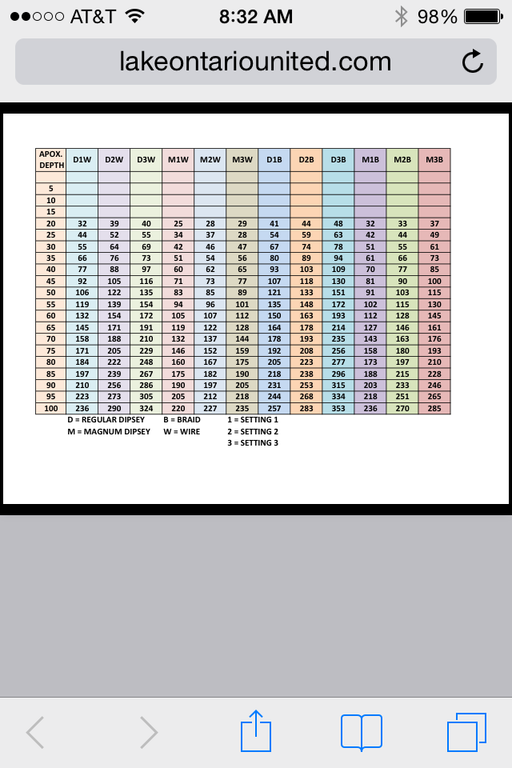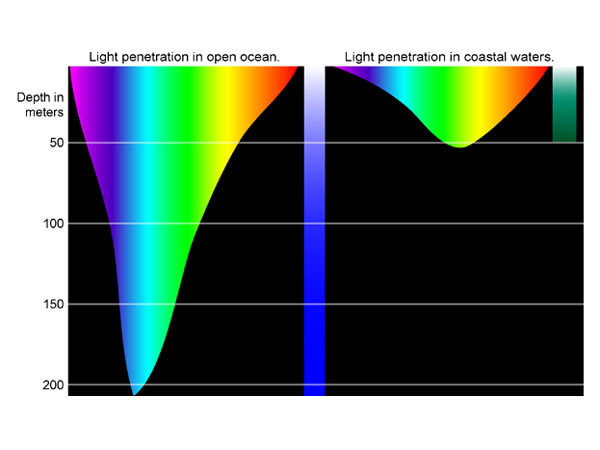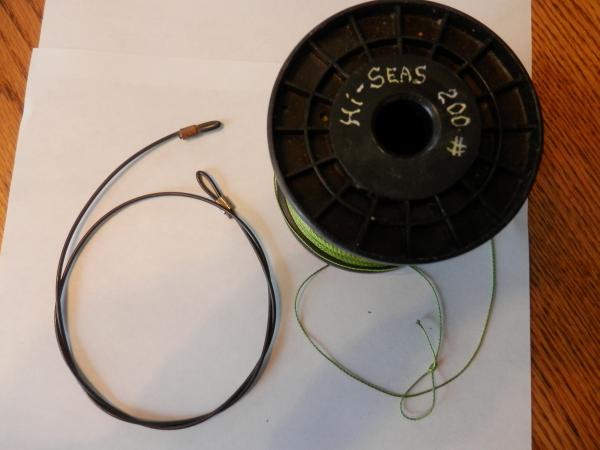-
Posts
1,524 -
Joined
-
Last visited
Content Type
Profiles
Forums
Events
Gallery
Store
Everything posted by TyeeTanic
-
You'll need to put 30# braid backing on it for a size 30 reel to work. 7 colors is about the most colors you can get on a size 30 reel and still have enough room for braid backing.
-

Spin Doctor versus Pro troll E chip
TyeeTanic replied to steelfire's topic in Questions About Trout & Salmon Trolling?
It's 50/50 with us as well. Perhaps you have good color combinations with SDs, but not with pro troll? -
100 ft of braid backing, then tie your wire. Anything that stretches (mono) or is a cushion below the wire (tape) isn't the best. It will cause the wire to pull tighter on the reel and this will misalign the wire with the reel guide, which will cause lots of friction and possibly lead to a reel lock up if a big fish hits. Braid is generally used so that the reel is 100% full when you spool with 1000 ft of wire, which makes the line counter more accurate, as it is calibrated to the correct length per revolution at the very top of the spool. As line is fed off the reel, the line counter becomes more inaccurate.
-
Steelhead are always in the top third to half of the water column. They generally like warmer water than king, which is why you catch them on the free sliders. This time of year, with the water being cold top to bottom, you really need to target the first 15 ft of water. In July and August we generally find them at 20 to 40 ft.
-
To target coho, as you say we would run high lines this time of year, focusing on top 15 ft of water. Also, there are specific coho setups involving a orange dodger and a twinkie fly (silver fly that is short around 2 to 2.5" long). I had good success getting them on an all blue mepps syclops lure.
-
We use a snubber between the ball and cable for two reasons, but first here's the entire setup, cable end-speed/depth probe-snubber- ball. The reason we do it that way is if anything will break due to a hang up, it'll be the snubber, and at least you don't lose the probe. But it also helps in waves, to take some stress of the gunwale.
-

marking line without line counter help
TyeeTanic replied to slamminsam's topic in Open Lake Discussion
Paul, I totally agree on repeatability. However, I'm just answering the poster's question. He asked how can I mark line every 10 ft. Someone said count the line guide passes. That isn't accurate in terms of ft out. -

marking line without line counter help
TyeeTanic replied to slamminsam's topic in Open Lake Discussion
Watching your line guide past isn't an accurate method when you have to let a lot of line out. As the spool gets thinner there's a lot less line going out for each pass of the line guide. To give you an idea, when you are almost empty of line only about 1/3 of the length goes out per revolution when compared to when the line is full. -

Finger lakes tackle. who is owed money.
TyeeTanic replied to machzrcr's topic in Open Lake Discussion
His spoons are awesome, but his customer service needs to be jacked up in a big way. Too bad, those spoons could have taken over the market. -
Definitely run wire divers. Some days they catch all the fish. On average they catch as many of not more than any other setup. Shimano talora wire rods are the best, but you can use a standard heavy/medium rod. Needs some flex and long (minimum 8ft in my opinion). Need to add a twillie tip with a standard rod. Spool 1000ft of 30# 7 strand or 19 strand, smoke colored wire. Connect directly to a swivel using the wireline knot (search the lotsa site and you'll see pictures of it).
-
I started left with bass rods, then went right with salmon rods because that's what was available. Right handeds are fine ... and better to have for resale (more popular)
-
Exactly, and the snubber helps to soften blows to the downrigger/gunnel in wavey conditions.
-
Can you take a few pictures of them, as follows: - close up of the arm. - close up of the entire board, connected to your line. - board in water a few feet behind boat - board in water in the final position (distance) behind the boat. With those, I'm positive we'll be able to figure this out.
-
Okuma convectors are the best you can get at that price point. The important parts are steel, which is well ... important!
-

replacing copper with weighted steel wire line
TyeeTanic replied to rolmops's topic in Tackle and Techniques
What reel are you going to use to put 1000 ft of wire, and then 300 ft of weighted steel? -

Run UV spoon colors or non UV spoon colors
TyeeTanic replied to kingpossible's topic in Tackle and Techniques
-
Yup, I've seen this in action. Actually they used it to take off gummy residue from my car logo on the back hood of my sports car. It didn't damage the paint. Use heat and peal off what you can, then the eraser wheel to take off the gunk. Polish with a polishing machine and it will be like new.
-
I've safely put backing and 7 color on a Convertor CV30D
-
We've started using the setup in Ontario. I still need to be convinced that it's worth the headache of handbombing the line in those last 20 ft. Tonnes of loose line in the boat and with a flapping fish, things can get tangled.
-
Why not use wire divers?
-
Haven't used braid. Don't know if fleas will stick to that large of a diameter, but they might, and if they do, you might end up with a pretty big ball at the head of the pully. Not sure if the rigger would cut through them. Why are you looking at braid instead of cable? My other concern with braid would be if you bottom out your rigger, it can likely be sliced by mussels at the bottom of the lake.
-
Fixed sliders are my preference. 6ft fluoro leader on swivel that attaches to main line off rigger.
-
I Used An Or16 clip To Attach The Torpedo To my Leadcore Line To Get More Depth. I Let Out All The leadcore and Then Added The Torpedo.
-
I would run 1 more wire dipsey and 1 copper (probably 250 or 300ft). Wire dipseys catch most of our fish.
-
I believe Atommik did in the past. Not sure now ... perhaps they will, with a special order?





